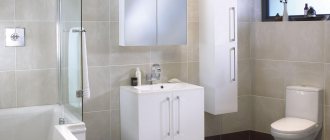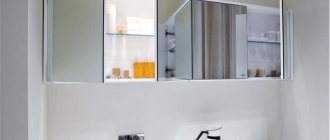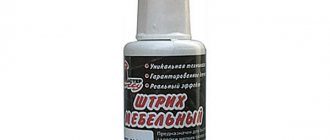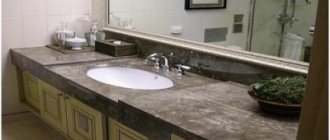Material selection
You can make your own sink from various materials. These include wood, acrylic, stone and concrete. But concrete products remain easy to make. This material is cheap and easy to manage.
Concrete sink
Getting a sink that matches the design is not so easy. After all the work, the concrete sink will not be inferior in appearance and functionality to a marble sculpture.
Criterias of choice
Bathroom renovations involve replacing worn-out equipment. The industry offers improved modifications equipped with smart devices.
The list of materials used to manufacture products has undergone revolutionary changes. Acrylic and composite compositions have replaced the usual sanitary ware. The world of forms is also seeing a large number of new products in the form of installations, corner structures and monolithic designs.
How not to get lost in this abundance of assortments? When purchasing a pedestal bathroom sink, focus on six points:
Dimensions
Before going to the store, you need to take measurements of the bathroom. The resulting numbers are the basis of a diagram with placement points for plumbing fixtures. The plan also indicates the location of furniture in the bathroom. The height of the pedestal for the sink, depth, and diameter are selected based on the parameters of the room.
Type
The product line is represented by three types of products:
- Separate (tulip sinks),
- monolithic,
- semi-pedestal.
Material
When choosing a sink model, study the properties and qualities of the material.
- Sanitaryware is a classic option. According to marketers, 60% of the market for sanitary equipment for the bathroom and kitchen is made of earthenware.
- The second most popular place is occupied by sanitary porcelain. Difference between materials in composition. The share of useful impurities in sanitary porcelain is 2 times higher. This ensures an increased level of strength and reduces the porosity of the coating. Competing materials are difficult to distinguish from each other in appearance.
- The artificial stone belongs to the luxury price segment. Composites are a durable, wear-resistant, heat-resistant option. A variety of colors and shapes of washbasins on a natural stone pedestal. The only negative is the weight. A relatively miniature structure made of artificial stone weighs 25 - 30 kg.
- Acrylic devices stand apart in this category. The fashion trend in the field of design is an innovative technological solution. Positive qualities and properties exceed those of analogues by 2 - 3 times. Bestseller – monolithic model.
- Glass – suitable for hi-tech design projects. The monitoring group Houzz Bathroom Trends Study has revealed an increased interest among Russians in glass sets. Nevertheless, the share of the consumer market remains small and belongs to the exclusive group. There is no pedestal for the sink.
- Steel ones are usually made to order for public places. They are practically not used in everyday life.
Required tools and materials
It is important to use high-quality materials in your work. In this case, attention is paid to the concrete solution. It is advisable to choose a solution with high performance. In addition, a mold for filling is required, but you can make the mold yourself.
To make a sink with your own hands from concrete, you need the following tools to organize the formwork:
- Plastic dowels and screws 8 mm – 30-35 pieces;
- Fiberboard sheet, small trimmings are also suitable;
- A sheet of stainless material, for example tin;
- Sealant, it is better to purchase a plumbing sealant;
- Reinforcement per 100 mm – 8 rods;
- Plastic pipes for part of the drain and under the mixer;
- Polyethylene film;
- Hangers and corners of various shapes;
- Bricks or blocks that will support the weight of the formwork.
In this case, the option of not simply manufacturing the product is considered. It is much easier to make a concrete sink by pouring it with parallel fastening in place.
Before starting work, purchase the required materials. The manufacturing process requires full attention, and being distracted by searching for a screw or other tool can negatively affect the final result of the work.
To prepare a concrete mixture you will need the following materials:
- Sand, pre-sifted, washed, dried. Sand size no more than 2 mm;
- High quality cement;
- The water is warm, without impurities, it is better to take filtered or bottled water;
- For cladding you will need granite or marble chips;
- Fiber fiber, if available, it is advisable to add to eliminate cracking of concrete;
- Plasticizer of any brand, additive for waterproofing.
It is advisable to use concrete grade M400 and higher.
For cladding I use the following materials:
- Tile mosaic tiles;
- Grout on seams with a waterproof effect;
- Mold resistant tile adhesive.
To make a sink with your own hands from scrap materials you will need the following tools:
- Jigsaw, electric circular saw;
- Vibrator for concrete;
- Screwdriver;
- Hammer drill with drills for concrete 8-10 mm;
- Hammer;
- Welding machine;
- Scissors capable of cutting metal;
- Grinder with a diamond-coated disc;
- Level and tape measure to control measurements;
- Mixer for mixing concrete;
- Construction pencil for markings;
- Rule;
- Pipe gun;
- Metal lighthouse;
- Container for stirring the solution;
- Plastic tile crosses;
- Rubber spatula;
- A comb to apply the glue evenly.
Formwork production and fastening
Before you begin assembling the formwork, select a location for the future sink.
The choice of shape for the sink remains arbitrary. You can make formwork of any size and shape, the main thing is that it is smooth and strong. If the shape of the sink suggests the presence of smooth curved sections, then it is better to make them from a sheet of iron.
Also, it is recommended to make the womb itself from tin. As soon as the formwork is assembled, all that remains is to go over the seams with sealant, this action is necessary to prevent the solution from leaking.
After the formwork is completely assembled, all that remains is to fasten it to the selected location on the wall. The wall must be strong enough to support the weight of the concrete. A good option would be to mount the sink in the corner, this creates additional support area.
The fastening process takes place in several steps:
- Drill holes in the wall for the structure's reinforcement. It must be located somewhere in the middle of the intended shape. The frame is welded or tied with wire.
- The formwork is securely attached to the wall using corners and screws.
- On the back side of the wall, several iron sheets are welded to the reinforcement. This will make the structure more reliable.
- Under the formwork a podium is made of bricks and blocks. It must be strong and stable.
- Clean the formwork from dirt. It is also worth checking the evenness of the structure and its stability.
When attaching formwork, the main criterion is stability and evenness. If there is a slight tilt, the sink will also be at an angle.
What about building codes?
If we talk about the size of the bathroom sink, then you should not ignore the relevant standards. Despite the fact that the owners of city apartments/country houses often decide for themselves how to place plumbing equipment, there are still certain standards regarding both the area of the bathroom and the distance between the devices located in it.
So, for example, the length of a bathroom located in a public place should be 80 centimeters and the width – 120 centimeters. As for the height, it should be at least 250 centimeters. In addition, the toilet door (if it is a hinged type) must always open outwards, and the ceilings in the corridor that leads to this room must have a height of at least 210 centimeters.
If the bathroom is combined, then, as a rule, there are also auxiliary devices - for example. Bidet or shower. If so, you must definitely adhere to the rules below:
- 70 centimeters is the minimum distance between the edge of the shower/bathtub and other objects;
- 25 centimeters - this should be the free distance on both sides of the toilet;
- 25 centimeters - the same amount, at a minimum, should be between the bidet and the toilet;
- 70 centimeters is the minimum permissible distance between the edge of the washbasin and other stationary objects in the room;
- 60 centimeters - this should be the free space in front of the toilet.
All of the listed standards are valid throughout the Russian Federation and must be taken into account at the stage of drafting the project. In addition, thanks to them you will be able to determine the dimensions of the washbasin (also at the design stage).
Making a solution for the sink
It is better to mix the concrete solution with a special mixer. This should not be done in a concrete mixer. Only a mixer can ensure good mixing of products.
The solution is prepared according to the following scheme:
- Add the required cement and only 1/8 of the liquid. Mix everything, making sure that no strong lumps or areas of dry concrete form.
- Then add plasticizers and fiber. To stir thoroughly.
- Add sand and granite chips. Stir and ensure homogeneity.
- Add the rest of the water and finally mix the ingredients.
Concrete should not be made plastic. This may reduce its performance. The mixture should be hard, this will make the finished product high quality.
Also, if it is planned that the bottom of the sink will be directly in the concrete, and not made of another material on top of it, then it is worth pressing a bowl into the concrete to the required depth, and insert a small pipe under it. Before doing this, they need to be greased or wrapped in cling film.
Pouring concrete
Concrete is first poured into the most inaccessible places. It must be constantly vibrated so that the mixture is distributed evenly. After completely filling the formwork, you need to level the surface and cover the sink with film.
After 3 days, the concrete will completely harden. You can remove the film. After the same period of time, the formwork is removed. But the installation of taps and siphons is postponed for a month. This is necessary so that the product dries completely and becomes strong.
Finishing
After removing the formwork, the wall will have a finished product. But the sink still needs to be processed and brought to its final form. This is done either by sanding or tiling.
If it is just grinding, then before starting the work you need to cover up the unevenness and cracks with concrete paste. After the paste has dried, start sanding. Here everything is done individually. You can bring the surface to perfect smoothness using a grinding machine, and also leave a slight roughness.
DIY country washbasin – ideas (from a bottle, wood, canister), photo
Plumbing in a dacha is a luxury that not everyone can afford. Difficulties in supplying water to the site can have different sources: the distance of the main water supply from the dacha, the impossibility of laying pipes, the high cost of equipment/plumbing, and much more. But in a summer cottage there is a constant need for water - to rinse your hands, to wash your face, or to wash the dishes. And the salvation in this case is a small country washbasin, which, by the way, is quite easy to make with your own hands.
DIY country washbasin
Features of country washbasins
A washbasin that can be used for a summer residence is generally a small structure that does not have a connection to water supply or sewer pipes, but performs simple functions that enable the user to maintain the proper level of hygiene of the body and home. So, usually the structure of a washbasin consists of only a water tank and a small sink (and in some cases there is none). The latter can be hung on the wall or installed on a cabinet. The water container can have different volumes - this will determine how often you will have to fill the tank in order to use the washbasin. However, such designs are not particularly large in size.
Design of a self-assembled country washbasin Washbasin for a country house with a drainage channel
Typically, the washbasin tank is filled with water as needed. To use it, you need to open the tap or press a special lever, and the water will flow. Once the tank is empty, you can refill it with water and use the sink.
Original heated country washbasin
On a note! Typically, country washbasins are installed on the street near the house or bathhouse. But some design options can also be installed indoors, provided that proper drainage of used water is organized.
You can use a country washbasin in the following cases:
- the need to rinse your hands after dacha work;
- washing hands and face to maintain hygiene;
- washing dishes;
- rinsing small items.
Heated washbasin for a summer residence
Due to its small dimensions and small volumes of water, it will not be possible to use a washbasin for larger purposes (for example, taking a shower).
Washbasin for a summer residence - decor
Advantages of a country washbasin:
- ease of installation anywhere;
- ease of making with your own hands;
- small dimensions;
- simplicity and ease of use;
- mobility - the washbasin can be easily moved to another place if necessary;
- the water in it quickly heats up under the rays of the sun - you can use warm water. However, there are country washbasins with the ability to heat water.
Simple plastic washbasin (washstand)
Disadvantages of this design:
- the need to frequently collect water;
- in cold weather, the water in the sink will remain cold;
- for the winter it must be emptied and removed from the street, otherwise it may be damaged;
- impossibility of full connection to the water supply and sewerage system.
The cheapest and easiest way to make a country washbasin Simple washbasin with cabinet and sink
Characteristics of bathroom sinks
First, let's find out what a sink actually is. In fact, the sink is a sanitary equipment and is designed for daily use (for example, for brushing teeth, morning washing, hand washing, various types of cosmetic procedures, etc.).
Modern manufacturers, as we just noted, offer simply a huge range of sinks, differing in:
- by color;
- by installation method;
- by dimensions;
- according to form;
- on invoice, etc.
Note! It is for this reason that it is not easy to immediately decide which sink is right for you. The fact is that you should take into account not only personal preferences, but also how the washbasin will look in the overall design of the room and apartment. Experts also recommend not to miss another important point - the functionality of the sink.
In short, you need to focus not only on the color and shape, but also on the dimensions - depth, height and width of the model. And it’s not surprising, because the dimensions of the bathroom and the dimensions of the washbasin must match. Therefore, before going to the store, measure the room, make a drawing on paper to scale and mark on it all the items that will be located here after the completion of the renovation work. This will help you with the sizes.
Types of designs
Despite the fact that when most people mention the phrase “country washbasin,” they imagine a small tank installed on the wall of the house, there are a lot of varieties of this type of design. And they differ not only in the color and material from which they are made, but also in size, appearance and even a number of design features.
On a note! Among country washbasins, there are the most primitive options and, at the same time, complex designs that have the function of heating water or unusual decorative design.
Table. Summary table of types of washbasins.
| Type | Short description | Subspecies |
| Street | Such washbasins, as you might guess, are installed outdoors. Usually these are suspended structures, fixed to a wall or some kind of support, and may not have a sink (in this case, the water simply flows to the ground). They are small in size and easy to use. There is no water heating function (warm water can only be used on sunny days, when the liquid is heated by the thermal energy of the sun). | They have one standard option - the one that hangs on the wall. The only differences here can be in the materials, shape, dimensions of the product and the method of water supply. |
| Home type | These washbasins are installed indoors - in a bathhouse, at home, on a veranda, etc. They usually have a more complex design, since here it is necessary to think through a water drainage system (it can be discharged either into a container, which is then emptied, or into a pipe, connected to a cesspool or taken outside the house to the site). Also, this version of washbasins suggests, in some cases, the possibility of supplying water to the container to be filled and the possibility of heating the liquid. | Such washbasins can be divided into 4 categories: on a counter, with a cabinet, with a filling system, and with a water heating function. |
Washstand with heated water for a summer residence
As for the materials used to make washbasins, plastic, stainless steel and sometimes wood are usually used. The latter is used less and less, since two other materials surpass it in performance characteristics. For example, a steel washbasin can last for many years without damage, plastic is absolutely not afraid of water, etc. When choosing a material, you should focus only on your own preferences and wishes in general. Below we will take a closer look at some types of washbasins.
The washbasin can be placed next to the beds Do-it-yourself washbasin from scrap materials
Self-leveling washbasin
This option can also be called hanging. This is the simplest model, consisting of a small water tank, fasteners and a tap for the ability to turn on or off the water. This type of washbasin works like this: the tank is filled with water manually, then you just need to open the tap or use the pressing mechanism, and the liquid is ready for use. Caring for the tank is extremely simple - you just need to regularly clean it from the inside to remove sediment and remove it from the street for the winter.
Plastic wall-hung washbasin
On a note! The capacity of such a washbasin usually does not exceed 3-5 liters of water. You can mount it on a house, on a tree – in general, on any vertical surface.
This option is excellent for ensuring a primitive level of hygiene - rinsing hands and washing. It is usually mounted outdoors in an accessible place for use. Installing it couldn’t be easier, and such a tank costs mere pennies. By the way, you can ensure the presence of such a washbasin in your dacha even without going to the store - it’s very easy to make it yourself.
Scheme of a washbasin made from a plastic bottle A simple pour-over washbasin can be made from a plastic bottle
The drain can be organized in any way you like: install a sink, and under it an old bucket, run a pipe, or simply allow the water to flow to the ground. By the way, it is recommended to pour gravel into the place where water will seep underground.
There are pour-over washbasins and much larger volumes - up to 18 liters. There is enough water in them, including for washing dishes. They can have different shapes, are usually made of plastic or metal, and always have a valve to prevent sudden leakage of water. You can install such a tank in the house or on the street, the main thing is to securely fasten it on a vertical surface.
A canister washbasin is a great option for the garage
Washbasin with cabinet
The head of the washbasin and the commander of the washcloths... That’s right, this type of washbasin, equipped with a cabinet, is popularly called “Moidodyr”, which Korney Chukovsky once wrote about. Such a washbasin looks massive and stable, and it can be installed both indoors and outdoors (you can see it more often in the house). The design is a wooden cabinet equipped with a sink and a water tank. There is also a small cabinet where you can store personal hygiene items.
Country washbasin with cabinet
The water tank of such a washbasin usually has a good large volume. You can fill it either manually or supply water through pipes. You can install a bucket inside the cabinet to collect used water. It's important to remember to take it out. The main advantage of this “Moidodyr” is the ability to conveniently wash dishes, and not just wash or rinse your hands.
Attention! If “Moidodyr” is located outside, then it is important to put it indoors for the winter so that the wood from which the cabinet is made does not become unusable. Also, you should not place such a structure in direct sunlight - the material may dry out and become deformed.
Washbasin on counter
This is a greatly simplified version of “Moidodyr”, it is a structure of a support, a tank and sometimes a sink. The tank and sink are simply fixed on a stand, usually metal. The legs of the support are dug into the ground. The advantage is that you can install such a structure anywhere in the garden.
Washbasin on a counter from an old washing machine Idea for a country washbasin
This version of the washbasin is used outdoors. It is stable and easy to use. The volume of the water tank is up to 15 liters. Usually the tank itself is equipped with a valve, so washing your hands using such a washbasin is very convenient.
Do-it-yourself washbasin for your dacha. Making a simple and convenient drain
Washbasin with heating
This option is the best from a landscaping point of view. After all, you can use not cold water, but heated and even hot water. Such washbasins are equipped with special heating elements that heat water and operate on the principle of a boiler - the tank must be filled with liquid and the equipment must be plugged into the network. After a while the water will warm up and it can be used
The heater can be immersed in water or located in a separate pipe in the tank. Cheaper is option number 1, and therefore it is used more often. But in this case, the tank will have to be descaled, and you need to use the washbasin carefully - the structure may cause an electric shock if it is damaged.
Country washbasin with cabinet and water heating
About the materials and shape of the sink
As for the form, there are no special restrictions - for example, you can find in stores:
- corner products;
- round/oval (and others with smoothed corners);
- in the form of a flower (“tulip”), standing on a long stem;
- built into cabinets;
- rectangular (ideal for rooms designed in a classic style);
- models built into the tabletop.
As for the materials from which washbasins are made, these include:
- faience;
- metal;
- porcelain;
- wood;
- marble (including artificial);
- glass;
- granite;
- corian (it consists of natural filler, colored impurities and acrylic resin);
- granite chips;
- stone (only artificial).
Product selection
Everything is simple here - you need to choose products depending on the specific needs of a person for clean water. For installation in a greenhouse, the simplest washbasin is sufficient, which you can even make yourself. But in the house, if funds allow, it makes sense to install a washbasin with the ability to heat water - washing and washing dishes will be much more pleasant.
Wastewater disposal
As for the volume of water consumed, you need to take into account the number of people who will use the washbasin, as well as the frequency of use. So, for one summer resident a small washbasin with a capacity of 5 liters is quite enough, but if several people live in the house or work on the site at once, then it is recommended to install a structure with a volume of at least 10 liters.
Choosing the best washbasin for your cottage
As for the material, you should focus on your preferences. The metal is stronger, more durable, does not fade, but will rust over time. Plastic is not subject to corrosion, but is more fragile and can fade under the sun. But it is quite inexpensive. Wood is used if a cabinet is needed under the washbasin. It is not recommended to make a tank out of it.
The photo shows another version of the cabinet, in the manufacture of which wooden boards were used. The most convenient types of washbasins for the dacha are portable models
To the question “Make or buy?” everyone must answer for themselves too. So, the simplest washbasin can either be bought for little money in a store or made from some container in an hour. But complex designs with a cabinet are easier to buy. Although, if you wish, you can do them yourself. Below we will look at several options for creating simple washbasins for your dacha.
Decorating a country washbasin
A few words about design nuances
Many attractive designer sinks seem convenient and practical at first glance, but this is often not true. For this reason, we recommend that you arm yourself with a tape measure and independently check the dimensions (both external and internal) of a sink with a complex design that you like - this will allow you to find out whether the level of comfort of a particular product is sufficient.
Special attention should be paid to asymmetrical sinks of complex shape, which are very popular, and this fact is explained not only by the current fashion for everything original. Sinks and bathtubs made in this style can become a true decoration of a small bathroom. We are talking here about products that (both) are made in the shape of an irregular oval with one slightly narrowed end. It is worth noting that the washbasin and sinks should be located at a certain angle, but only so that the narrow part of the bathtub is under the same narrow part of the washbasin. As a result, your bathroom will look much more spacious, while the dimensions of both plumbing fixtures will be sufficient for their further comfortable use.
If you are planning to install a sink above a washing machine, you should know that in such cases certain difficulties often arise. For example, you may have to mount the sink too high or, alternatively, it may not be deep enough to fit flush.
Note! It is recommended that the side of the sink extends slightly beyond the edge of your washing machine. As for the problem with the height of the washbasin, it can be completely solved by using a special model. We are now talking about a sink, which is equipped with a special (and quite large) shelf located on the right or left side of the bowl.
In this case, the washing machine itself should not be located directly under the washbasin, but near it - directly under this special shelf.
Go ahead. If you are choosing a sink, be sure to take care of the children living in your home. For a certain time (several years), the washbasin will be too high for a child, and purchasing a separate sink for each family member in order to dismantle it in the future can hardly be considered advisable. An excellent way out of this situation could be a small stool or chair - the child will use it as a kind of stand. We also recommend putting rubber pads on the legs of the stool, otherwise they may slide on the tiles.
Making a washbasin from a plastic bottle
Step 1. First, you should take everything you need to create such a simple washbasin. This is a large 5 liter plastic bottle, marker, scissors, water-resistant glue, plasticine, hose connector.
Tools and materials needed to make a washbasin
Step 2. Next you need to modify the hose connector. Its valve needs to be weighted. In order to do this, you need to take the marker, disassemble it and leave the marker body. Meanwhile, you need to remove the valve itself from the connector and remove the rubber seal from it.
Disassembled marker and valve from connector
Step 3. The marker tube needs to be filled with plasticine and compacted well. This is necessary so that the valve itself in the future washbasin shuts off the water well. You then need to insert the valve itself inside the marker body, gluing it with waterproof glue.
A valve is inserted inside the marker
Step 4. Next you need to take a bottle - the future water container - and screw off the lid. The connector will need to be built into the cover by cutting a hole in it with the same diameter as the connector thread. The thread must be coated with sealant or glue and screwed into the lid. The thread must be inside.
The thread is lubricated with sealant
Step 5. The hose connector nut must be screwed on from the inside of the cover and the glue must be thoroughly dried. Next, you can insert the valve into the connector and install the rubber seal in place.
Now you can insert the valve
Step 6. You need to cut a hole in the bottom of the bottle-container to fill the water. The easiest way to organize this place is to take a plastic bottle of a smaller volume and cut off the top of it, which will serve as a funnel and lid for the washbasin.
The top of the smaller bottle is cut off
Step 7. This washbasin was mounted on wood. It can be tied to the support using twine, which can be secured with tape on the tank itself. You can also wrap the bottle with twine and use it to hang the washbasin on a nail on the wall.
The twine is fixed with tape. You can also wrap the bottle with twine
Step 8. The bottle cap with the valve must be screwed to the tank, secure the latter to the support, and the washbasin is ready for use.
Screw on the lid with valve
Preparatory stage
See also:
Hanging system for sliding wardrobes: pros and cons of the design
Before you begin assembly, you need to complete a few important steps. They are a preparatory stage.
See also
Calculation of sliding wardrobe doors for self-assembly: formulas and programs
Here we are talking about the following events:
- determine a place to place a cabinet with a sink;
- check the serviceability of the sewerage system and all pipes;
- take measurements of the free space;
- starting from the previous steps, select and buy all materials;
- provide the possibility of installing a suspended structure;
- draw a diagram of furniture;
- prepare tools and materials.
This is a very important stage, so approach it very carefully. Until you fix the problems in the bathroom, it is not recommended to start installing the cabinet.
Washbasin made from a bottle and syringe
An even simpler option is to create a homemade washbasin from an ordinary plastic bottle.
Step 1. First of all, you need to unscrew the cap from the bottle and cut a hole in it with the same diameter as the syringe you took. A 2.5 cc syringe is ideal.
You need to cut a hole in the cap for the syringe.
Step 2. Next, you need to cut off the spout of the syringe on which the needle is placed. Moreover, not only the spout itself needs to be removed, but also the entire upper part.
The syringe tip needs to be cut off
Step 3. Then the syringe must be inserted into the hole in the bottle cap. It is important that the syringe barely fits into the hole, otherwise it will have to be sealed with sealant to prevent water leaks.
Syringe inserted into hole
Step 4. The stopper with the syringe can be screwed back onto the bottle. The bottom of the container must be cut to allow it to be filled with water.
The cap screws onto the bottle
Step 5. Now the washbasin can be installed and used. To shut off the water, the syringe plunger must be pulled out.
The syringe piston is pulled outwards and in this position of the piston the washbasin can be used
Attention! Large bottles are not recommended in this case. Otherwise the design will be unreliable. A volume of 2-3 liters is quite sufficient.
Instructions in a few steps
Let's look at how to make a very simple hanging cabinet for a bathroom sink from 40 cm thick pine furniture board.
Step 1. First of all, you need to make the appropriate markings on the pine board and saw it. There should be several parts - the sides of the cabinet, as well as its upper and lower parts. You need to saw strictly along the pencil lines drawn in accordance with the dimensions.
Cutting furniture board
Step 2. Next, you need to make cuts at the edges of the walls at an angle of 45 degrees. This is necessary to ensure the correct joint of the parts.
Cuts are made at an angle of 45 degrees
Another photo of the process
Step 3. Then both side walls and the bottom need to be laid exactly in one row and connected with tape. You need to glue the elements with adhesive tape on the front side of the shield. This measure will help to smoothly glue the parts into a single box.
The walls are connected with tape
Step 4. After this, you need to carefully turn the workpiece over and coat the cuts (45 degrees) with wood glue, then assemble the box.
The saw cuts are coated with glue
Step 5. Now you need to attach the tabletop to the top of the box. The cuts also need to be coated with glue beforehand.
The top part of the box is attached
Step 6. After this, you need to tighten the box with tape and zip ties.
The box is secured with tape
Screeds are also used
Step 7. Next, you need to ensure the reliability of the connection between the sides of the box. Dowels will be used. To do this, you need to drill deep holes with a drill of the required diameter in the end parts of the future cabinet so that they pass through the lower and upper parts of the box and its end parts. Then you need to pour glue into the holes and insert a wooden dowel there, also coated with glue.
Holes are drilled
Glue is poured
Wooden dowel winds up
Step 8. The cabinet needs to be left in this position alone, and when it dries, you need to saw off the excess protruding dowels.
Excess dowels are trimmed off
Step 9. It's time to start sanding the product. The first step is to sand off the protruding parts of the dowels, then sand the entire surface of the cabinet.
Sanding the structure
Step 10. Places where dowels are inserted, as well as all connections in the area of joints and corners must be puttied. Before further work, the putty must be dried.
Applying putty
The putty must dry
Step 11. Now you need to sand the product again.
Re-sanding
Step 12. Next, the cabinet needs to be painted and treated with protective compounds. By the way, there are certain paints and varnishes that will not only give the tree a beautiful look, but also additionally “preserve” it and protect it from exposure to water. The coating layer must be thoroughly dried. The main part of the cabinet is ready.
Treating the cabinet with a protective compound
Step 13. It's time to start making the facade. It will be made of plywood. You need to cut out the façade part to the required size.
Facade detail is cut out
Step 14. Now the facade blank needs to be sanded.
The workpiece is polished
Step 15. After sanding, smooth plywood must be carefully primed. Do not skimp on the primer composition - this measure will reduce the consumption of paint and varnish material.
Primer is applied
Step 16. Next, the surface of the facade needs to be sanded again.
Re-sanding of the facade
Step 17. Then the facade needs to be coated with a layer of varnish and left to dry.
The facade is covered with a layer of varnish
Step 18. Now you can return to the cabinet itself. It should be additionally reinforced from the inside with a chipboard frame. To do this, you need to cut the elements to the required size and secure them inside the box with self-tapping screws, repeating the outline of the cabinet. The dimensions of the inner chipboard box should be slightly smaller than the main size of the cabinet.
Chipboard parts are cut
Formation of the inner box
Step 19. Next, inside on the sides of the cabinet you need to attach telescopic guides for the drawer to the self-tapping screws. They should be parallel to each other.
The guides are attached with self-tapping screws
Attaching telescopic guides
Step 20. Now you need to make a drawer for the cabinet. It will have a curly shape, in the back there will be a recess, which is designed to ensure that the box fits where the pipes will run. The side walls of the box must be cut from chipboard to specified dimensions, and the bottom must be made from plywood.
Drawer parts are cut out
Another photo of the process
Step 21. It is best to assemble the box using glue with an additional tie with self-tapping screws.
Assembling the box
Box assembly process
Step 22. Telescopic guides need to be attached to the drawer. To do this, they need to be screwed with self-tapping screws to the walls of the drawer from the outside, maintaining a small gap at the bottom between the drawer and the bottom of the cabinet.
Fastening the guides
Step 23. At the top of the back of the cabinet you need to screw fasteners that will allow you to fix the cabinet to the wall. These can be simple but strong corners secured with self-tapping screws.
Fasteners are screwed on the back of the cabinet
Step 24. The cabinet needs to be hung on the wall. It needs to be placed under the sink and the locations for drilling holes in the wall should be marked. Next, you need to drill holes in the wall, install dowels and hang the cabinet.
The cabinet is hung on the wall
Step 25. In the upper part of the cabinet you need to make a hole where the drain pipes from the sink will pass. When the hole is cut, it is necessary to coat it from the inside with sealant.
A hole is made in the upper part
The edges of the hole are coated with sealant
Step 26. All that remains is to attach the facade. To do this, you need to screw in self-tapping screws in the box at the place where the facade is attached, but not all the way, but so that they come out a little bit through the front side of the box. Next, the facade needs to be placed in its “rightful place”, leveled using wedges (in this case, the role of wedges is played by folded pieces of paper) and a little pressure is applied to it. When the façade is removed, there will be small recesses on its reverse side - imprints of self-tapping screws. Now you can drill holes in the place where these marks appear, and then simply screw the facade with self-tapping screws to the box. The cabinet is ready.
Façade alignment
The facade is attached to the cabinet
Step 27. All that remains is to install the bowl on the cabinet.
Finished vanity unit
It is better to coat the bottom of the bowl with sealant and place it on the countertop. The work has been completed. All that remains is to connect all communications.
Video - Cabinet made of aerated blocks
Washbasin made from an oil canister
Another simple washbasin option that motorists can make without throwing away the oil canister and purchasing a water bottle with a shut-off valve plug.
Step 1. The first step is to take a metal canister and rinse it well.
The canister must be rinsed thoroughly
Step 2. You will also need to take the neck of a plastic bottle. It needs to be attached to the canister in the place where the water outlet will be organized, that is, the tap, and circled with a marker.
The neck of the bottle is outlined with a marker
Step 3. Using the resulting contour, you need to cut a hole in the tank. You can use a drill and drill a few holes to make the cut.
Holes are drilled using a drill. A hole is cut in the canister.
Step 4. The sharp edges of the hole need to be sanded with a file.
The edges of the hole are sanded
Step 5. Using cold welding, you need to attach the plastic neck of the bottle, which was previously used to apply markings, to the tank by inserting it into the hole.
Plastic bottle neck The neck is inserted into the hole
Step 6. Now you need to screw the bottle cap, equipped with a valve, onto the neck - this will be the tap.
The future faucet of a country washbasin
Step 7. Having filled the tank with water, you can use the washbasin by opening and closing the water using the valve.
Ready-made country washbasin from a canister











